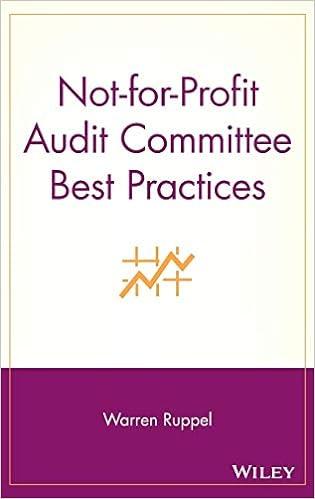
P10-7 Vidi Corporation, a private enterprise, made the following purchases related to its property, plant, and equipment during its fscal year ended December 31, 2017. The company uses the straight-line method of depreciation for all its capital assets 1. In early January, Vidi issued 140,000 common shares in exchange for property consisting of land and a warehouse. On the date of acquisition, a reliable, independent appraiser estimated that the fair value of the land and warehouse was $600,000 and $300,000, respectively. The seller had advertised a price of $860,000 or best offer for the land and warehouse in a commercial retail magazine. Vidi paid a local real estate broker a finder's fee of $35,000. The most recent sale of Vidi's shares took place a month prior when 15,000 common shares were sold for $9 per share. 2. On March 31, the company acquired equipment on credit. The terms were a $7,000 cash down payment plus payments of $5,000 on March 31 for each ofthe next two years The implict interest rate was 12%. The equipment's list price was $17,000. Additional costs that were incurred to install the equipment included $1,000 to tear down and replace a wall and $1,500 to rearrange existing equipment to make room for the new equipment. An additional $500 was spent to repair the equipment after it was dropped during installation During the year, the following events also occurred 3. A new motor was purchased for $50,000 for a large grinding machine (original cost of the machine, $350,000, accumulated depreciation at the replacement date, $100,000). The motor will not improve the quality or quantity of production, however, it will extend the grinding machine's useful life from the current 8 years to 10 years (ignore the IFRS requirement to estimate and remove the cost of the old motor) 4. The company purchased a small building in a nearby town for $125,000 to use as a display and sales location. The municipal tax assessment indicated that the property was assessed for $95,000, which consists of $68,000 for the building and $27,000 for the land. The building had been empty for six months and required considerable maintenance work before it could be used. The following costs were incurred in 2017 prior to the company moving into the building on September 30: former owner's unpaid property taxes on the property for the previous year, $900, current year's (2017) taxes, $1,000, reshingling of roof, $2,200, cost of hauling refuse out of the basement, $230, cost of spray cleaning the outside walls and washing windows, $750, cost of painting inside walls, $3,170, and incremental fire and liability insurance for 15 months starting September 30, $940 5. The company repaired the plumbing system in its factory for $3 6. On June 30, the company r eplaced a freezer with a new one that cost $20,000 cash (fair value of $21,000 for the new freezer less trade-in of the year, the company had depreciated 60% of the value of the old freezer). The cost of the old freezer was $15,000. At the beginning old freezer, that is, 10% per year of use 7. The company painted the factory exterior at a cost of $12,000








